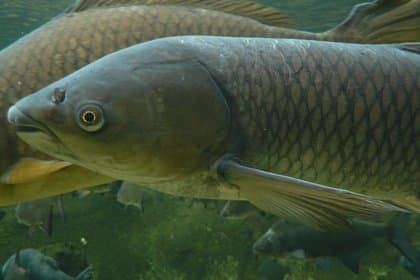Why is Grass Carp a Problem?
Grass carp (Ctenopharyngodon idella) is a species of freshwater fish that is widely used as a biological control measure for controlling unwanted aquatic vegetation in ponds, lakes, and other freshwater bodies. However, while they may be seen as an effective solution, the reality is that they can also have negative effects on the aquatic ecosystem and human society. In this article, we will delve into the reasons why grass carp is considered a problem and the potential consequences of their introduction to new areas. From their impact on aquatic vegetation and native fish and wildlife, to the ecological and economic consequences of their presence, this article will provide a comprehensive look at the issue of grass carp.

Grass carp (Ctenopharyngodon idella) is a species of freshwater fish that is native to Asia and Eastern Europe. They have been widely used as a biological control measure for controlling unwanted aquatic vegetation in ponds, lakes, and other freshwater bodies. However, their ability to consume large amounts of vegetation can also have negative effects on the aquatic ecosystem, making them a problem for both the environment and human society. In this article, we will discuss the reasons why grass carp is considered a problem and the potential consequences of their introduction to new areas.
Impact on Aquatic Vegetation
Grass carp are known to consume a wide variety of aquatic plants, including submerged, floating and emergent vegetation. They have a high reproductive potential and can lay up to one million eggs per year, which increases their capacity to colonize new areas quickly. This can lead to a significant reduction in the diversity and abundance of aquatic plants, which can have a cascading effect on the entire ecosystem.
The loss of aquatic vegetation can reduce the habitat and food resources for other aquatic animals, such as insects, fish, and birds. Additionally, it can also lead to erosion and sedimentation, which can negatively impact water quality and affect human uses of the water body such as recreation, navigation and irrigation.
Impact on Native Fish and Wildlife
Grass carp are not native to North America, and their introduction to new areas can also cause harm to native fish and plant species, as well as disrupt the balance of the ecosystem. They can displace native fish species and negatively impact their populations. Research has also shown that grass carp can reduce the abundance of aquatic insects, which are an important food source for native fish and wildlife.
Ecological and Economic Consequences
The introduction of grass carp can have serious ecological and economic consequences, both for aquatic ecosystems and for human society. The loss of aquatic vegetation and native fish species can negatively impact the entire ecosystem, and can also lead to reduced economic benefits such as fishing and recreation. Additionally, the cost of controlling and managing grass carp populations can be significant, and can put a strain on resources for both government and private organizations.
In conclusion, grass carp is considered a problem due to its ability to consume large amounts of vegetation, leading to a reduction in aquatic plant diversity and abundance. This can have a cascading effect on the entire ecosystem, negatively impacting native fish and wildlife, as well as human uses of the water body. Additionally, grass carp can also cause serious ecological and economic consequences. It is important to consider the potential impacts of introducing grass carp to a new area, and to implement appropriate management strategies and regulations to minimize negative effects.
It's also worth noting that, the use of grass carp as a biological control measure should be carefully evaluated and considered in light of the potential ecological and economic consequences. Alternative control measures, such as manual removal or chemical treatments, may be more selective and less disruptive to the ecosystem. Additionally, it is important to consider the use of integrated pest management strategies, which involve a combination of different control methods, to minimize the negative effects of grass carp on the environment.
In conclusion, grass carp is considered a problem due to its ability to consume large amounts of vegetation, leading to a reduction in aquatic plant diversity and abundance, impacting native fish and wildlife, and causing serious ecological and economic consequences. The introduction of grass carp should be carefully evaluated and alternative control measures should be considered. Implementing appropriate management strategies and regulations, as well as using integrated pest management, can minimize the negative effects of grass carp on the environment.
No comments yet, be the first to share your thoughts!
Newsletter
Sign up for our newsletter and stay up-to-date on the latest tips, tricks, and techniques in carp fishing. From beginner to expert, our newsletter offers something for every level of angler. Do not miss out on exclusive content, product reviews and fishing reports that will help you catch more carp.
Related Posts
Where to Buy Triploid Grass Carp: A Guide for Aquatic Pest Management
almost 3 years ago
Carp Fishing Tips: How to Catch Carp Quick and Easily
over 3 years ago
Stay Dry and Warm: The Importance of a Waterproof Fishing Jacket in Winter
almost 3 years ago
Carp Fishing Rigs: A Comprehensive Guide to Choosing the Right Rig
almost 3 years ago
Sweet Corn and Semolina Boilies: A Carp's Delight
over 1 year ago
Carp Rod Guide 2023 (Blanks, Rod Guides, Test Curves)
over 2 years ago